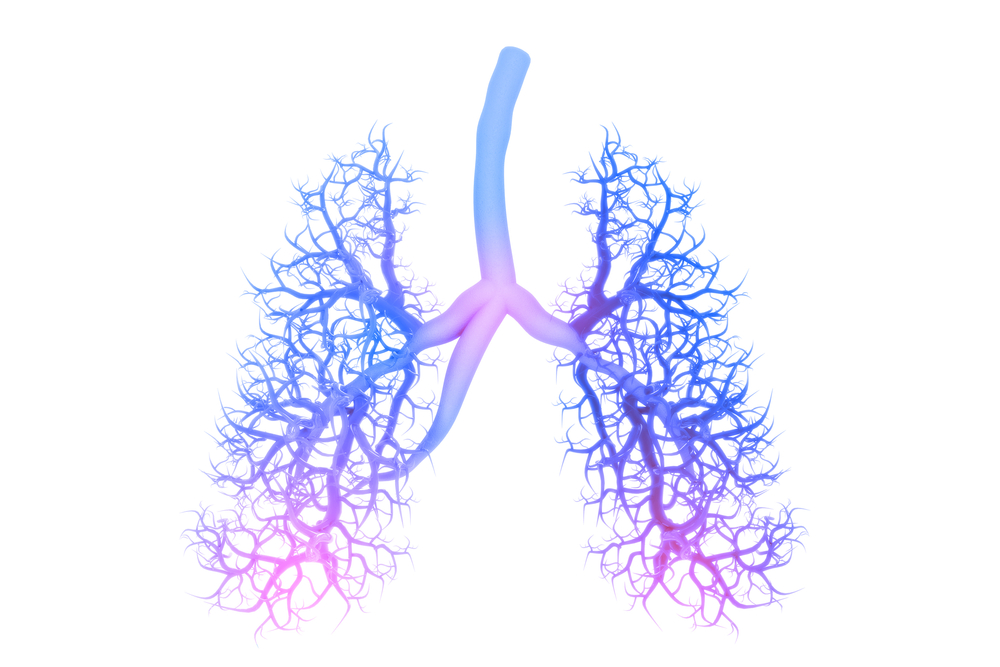More Accurate Way of Detecting Lung Disease Early in Scleroderma Patients Using HRCT Scans Proposed

A new computerized method to analyze high resolution computed tomography (HRCT) scans may help in identifying interstitial lung disease at early stages in scleroderma patients, the research team that developed it reports.
The tool was described in the study “Performance of a new quantitative computed tomography index for interstitial lung disease assessment in systemic sclerosis” published in Nature Scientific Reports.
Scleroderma is a chronic autoimmune disorder that affects the connective tissue — the tissue that holds together other tissues and supports organs — and is characterized by scarring (fibrosis) of the skin and internal organs. In systemic scleroderma, also known as systemic sclerosis (SSc), the degree of scarring in organs is quite profound.
Interstitial lung disease (ILD) is a common complication of scleroderma (called SSc-ILD), caused by excessive tissue scarring in the lungs that progressively compromises their ability to transfer oxygen to the bloodstream.
HRCT can help to detect SSc-ILD in up to 90% of the cases, and a study proposed a staging of SSc-ILD using HRCT and pulmonary function tests to help predict patient outcomes. “However, this visual scoring of the extent of SSc-ILD remains affected by significant intra- and inter-observer variability,” the researchers said.
Scientists at Federico II University in Naples, Italy, and their collaborators set out to develop a new and unbiased, computerized method to analyze data from HRCT scans that would enable them to distinguish between SSc patients with and without ILD.
To that end, they created a composite index, called a computerized integrated index (CII), which they derived using three different parameters of tissue density analyzed by computed tomography (CT):
- the mean lung attenuation (MLA), which refers to the strength of the signal that can be detected upon X-rays passing through lung tissue during a CT scan;
- the skewness, which refers to the degree of asymmetry in measurements seen in a graph or histogram;
- and the kurtosis, which refers to the degree of “peakedness” in the measurements.
To test the performance of the new composite index in distinguishing SSc patients with ILD from those without, researchers analyzed HRCT scans from 83 patients. The group comprised 17 patients (20.5%) with diffuse cutaneous SSc (high skin and more organ involvement, dcSSc) and 66 (79.5%) with limited cutaneous SSc (lower skin involvement but ILD still possible, lcSSc).
Visual analysis of HRCT scans revealed that 47% of these patients participating had ILD.
As expected, the CII values of these patients were lower compared to those without visual signs of ILD. (Lower CII values correspond to more severe lung disease.)
At the cut-off value of 0.1966, the CII successfully distinguished between SSc patients with and without ILD at a first evaluation, with a respective sensitivity and specificity of 81% and 66%.
In 34% of those with no visual signs of ILD, CII values were below the cut-off reference to suggest interstitial lung disease. Importantly, in 67% of these patients the diffusing lung capacity for carbon oxide (the lungs’ ability to expel carbon dioxide) was less than 80%, again suggesting lung impairment.
These findings indicate that the new composite index “could be sufficiently sensitive for capturing early lung density changes in visually ILD-free patients,” the study states. Data also showed “that the CII was significantly worse in patients with a longer disease duration, the dcSSc subset.”
Additional analyzes demonstrated the CII at baseline and at one-year follow-up was strongly correlated with patients’ lung function — measured by several spirometry parameters, including total lung capacity and diffusing lung capacity for carbon oxide — and with blood levels of certain immune-inflammatory biomarkers, like sIL-2Rα and CCL18.
“Our new CII could be helpful in driving the choice of patients to treat in the context of a more defined precision medicine approach, which ultimately will improve survival and well-being based on individualized and tailored patient management,” the researchers wrote.
“To this purpose, the potential application of the CII in low-dose volumetric HRCT protocols for the early quantitative detection of lung density changes in SSc patients should be explored in larger multicenter cohort studies,” they concluded.






